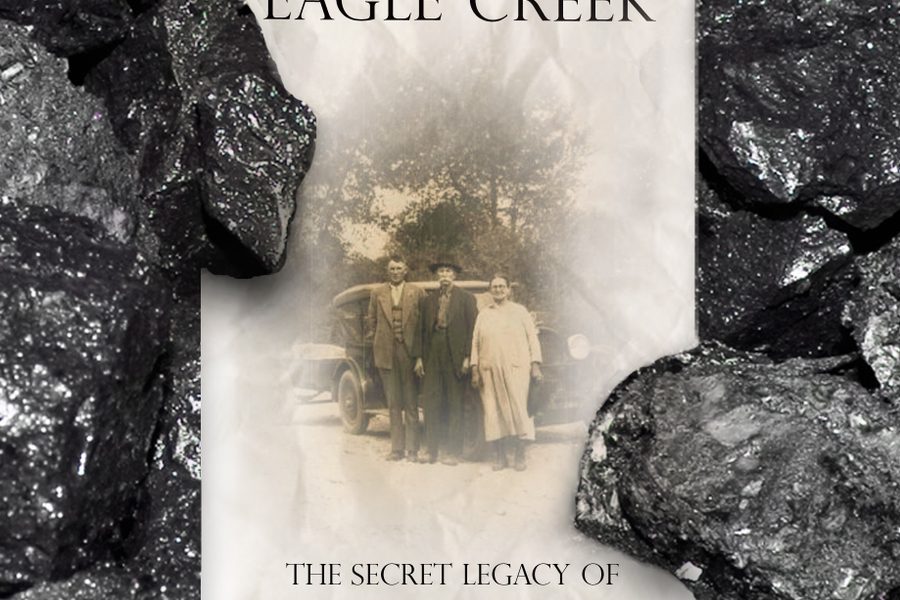
But Jeff Biggers, an author, performer, journalist, teacher and native of the southern Illinois coal fields, says that the job creation and economic stimulus promises of clean coal are a myth.
Many major environmental groups and prominent environmentalists say there is no such thing as “clean coal.” Even if emissions of sulfur dioxide, mercury and other harmful pollutants can be reduced greatly, there is still no proof that carbon capture and sequestration or any other method of dealing with carbon dioxide emissions will work. And the environmental and health effects of coal mining can’t be ignored.
In his frequent performances and in his new book Reckoning at Eagle Creek: The Secret Legacy of Coal in the Heartland, Biggers takes it a step further and pokes holes in the promise of clean coal jobs. Modern coal mining is so mechanized that relatively few miners are needed to extract the coal. Strip mining, which companies do whenever seams are close enough to the surface, is heavy on huge machinery and light on actual workers.
Underground, long-wall mining that is most in use now takes just a few men to run a machine that grinds away at the coal face without leaving behind the pillars which miners once skillfully carved out to hold up the roof.
Biggers also says that promises of many billions of tons of coal still in the ground are misleading, since much of this coal is too deep to be mined. He says the country is in a state of peak coal, similar to peak oil, with reserves already significantly declining. In other words, he says, massive investment in “clean coal” technology, and staking towns’ and regions’ economic futures on coal, will become moot in the not-so-distant future as coal dwindles.
Biggers advocates a “GI bill for miners” wherein the government would subsidize training miners in “green jobs” including the manufacture of wind turbines and solar panels. Like many environmental and civic groups, he dreams of reinvigorating the heartland’s once glorious industrial infrastructure to manufacture machinery and equipment for renewable energy. (Of course the aspects of globalization that led to off-shoring of the steel and auto industries –including vastly cheaper wages and lack of regulations abroad – are also competitive factors in wind turbine and solar panel manufacture).
Biggers delved into the history of coal a decade ago after a coal company strip mined the southern Illinois homestead that his family had lived on since 1805.
With the group Coal Free Future Project, Biggers uses theater, oral history and other types of popular education and performance to teach a broad range of the American public about the “secret history” of coal and the risks it poses to our future. The secret history includes the fact that slaves in Illinois – land of Lincoln – were forced to work in the mines. He also frames the secret history of coal as the exploitation of working class, hardscrabble places like Appalachia and southern Illinois by the “coal barons” and larger business class whose cities are powered by coal.
“The same dynamic that allowed us to turn our backs as emancipationists and allow slavery in the coalfields of Illinois because it provided economic revenue, that same justification for profit is ultimately what drives the coal industry today,” Biggers said. “History is a series of cautionary tales.”
Most mining jobs these days are non-union. If former union mines reopen to fuel a clean coal boom, in most cases they will open as front companies and subsidiaries to avoid union contracts. Major coal companies have already widely used this tactic to break unions.
And as major mine accidents in recent years show, mining is a highly dangerous and unhealthy job. Biggers witnessed the health effects of mining first hand with his grandfather, who suffered from black lung disease and had a “coal tattoo” on his face – a piece of coal from an explosion, literally embedded in the flesh.
“The abuse of the miner goes hand in hand with abuse of the land,” Biggers says. “Look at my grandfather – first they stripped his health, then they stripped his land. My role is to get people concerned about the environment together with people with coal mining backgrounds to see they have a common interest – they’ve both been dealing with abuse for centuries.”
Kari Lydersen is a Chicago-based journalist, author and assistant professor at Northwestern University, where she leads the investigative specialization at the Medill School of Journalism, Media, Integrated Marketing Communications. Her books include Mayor 1%: Rahm Emanuel and the Rise of Chicago’s 99%.








